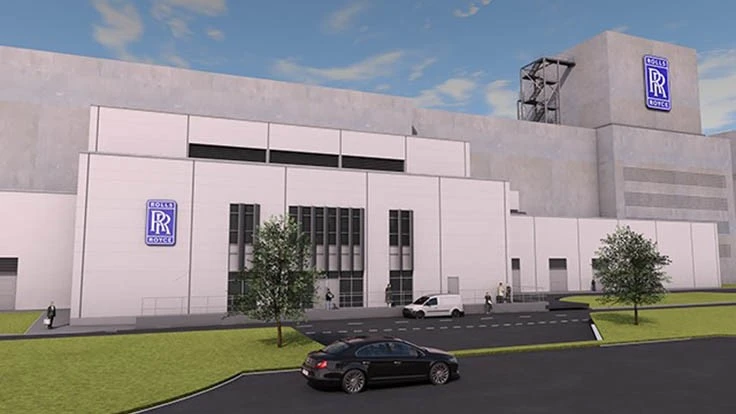
Rolls-Royce has started work on its new testbed facility (artist's impression above). The plans for the testbed were announced in June 2017 as part of a wider $213.4 million investment in UK aerospace facilities.
The new testbed, which is expected to be commissioned in 2020, will support Rolls-Royce’s ongoing industrial transformation and will provide important additional capacity as the civil aerospace business continues to ramp-up engine production and deliver on a record order book.
Capable of testing a range of today’s engines, including the Trent XWB and the Trent 1000, the facility will also serve as a base for testing Rolls-Royce’s UltraFan engine for the next generation of aircraft.
The new testbed, which will be the largest indoor facility of its type in the world, will harness the latest digital technology to set conditions and obtain evidence from a wide variety of test activities, such as water ingestion and endurance testing. It will also benefit from the latest advancements in test equipment including new X-ray capabilities.
The testbed itself will have an internal area of 7,500m2 and will be surrounded by two concrete walls which measure up to 1.7m thick.
The decision to invest in Derby, the home of Rolls-Royce’s civil aerospace division, was underpinned by a constructive dialogue with senior union representatives in the UK and will help to sustain more than 7,000 Rolls-Royce jobs across the East Midlands.
In addition to the Trent XWB engine, which powers the Airbus A350, Rolls-Royce assembles the Trent 700, Trent 900, and Trent 1000 engines in Derby, UK, powering the Airbus A330, Airbus A380, and Boeing 787 Dreamliner respectively.
Derby has also been home to the design and development of the Trent 1000 TEN which powers the Boeing 787 Dreamliner family and entered service in November 2017; the Trent XWB-97 which powers the Airbus A350-1000 and entered service in February; and the Trent 7000 which will power the Airbus A330neo when it enters service later this year.
The new testbed supports the IntelligentEngine vision recently outlined by Rolls-Royce by bringing together the latest in digital and physical testing technology to ensure Rolls-Royce is best placed to deliver passengers more reliably and more efficiently than ever before. In addition to designing, testing, and maintaining engines in the digital realm, the IntelligentEngine vision sets out a future where an engine will be increasingly connected, contextually aware, and comprehending, starting from its time on the testbed.
Rolls-Royce today also welcomed the UK Government’s announcement of support for research projects that will help Rolls-Royce and its partners develop more efficient, technologically sophisticated aircraft engines such as the UltraFan. Rolls-Royce will also be investing more than $48.4 million in these new technologies, which include developing advanced control systems for the engine.
Latest from Aerospace Manufacturing and Design
- Piasecki acquires Kaman's KARGO UAV program
- PI Americas’ long-travel XY piezo nanopositioners-scanners
- AAMI project call submission deadline extended to May 12
- Jergens launches cast iron tooling column additions
- Airbus to acquire assets relating to its aircraft production from Spirit AeroSystems
- FANUC America's Cobot and Go web tool
- Chicago Innovation Days 2025: Shaping the future of manufacturing
- High-density DC/DC converters for mission-critical applications





